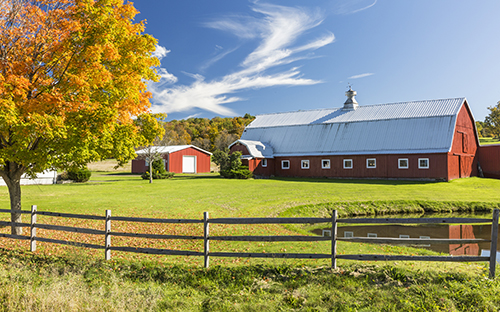Hoard’s Dairyman Intel: The shrinking “little class” of dairy farms
Howdy,
With thanks to NeFU VP Vern Jantzen. All those small dairy farms took their milk money to town to buy supplies, and there were always supplies to buy. Our family milked 40 to 50 cows. In our western Madison County neighborhood half way between Tilden and Newman Grove, lot’s of folks milked cows. There were five dairies less than five miles from our home. Now, Madison County has a total of six dairies. Is it any wonder small town main street has dried up?
John K. Hansen, President
Nebraska Farmers Union
1305 Plum Street, Lincoln, NE 68502
402-476-8815 Office 402-476-8859 Fax
402-476-8608 Home 402-580-8815 Cell
john

The shrinking “little class” of dairy farms
June 20, 2016

by Corey Geiger, Managing Editor
During a 20-year span, the number of small dairy farms in our ranks has dropped dramatically. And with it, where our cows reside has changed, too. That situation was detailed in the April 25 Hoard’s Dairyman Intel “The tale of two herd sizes: 144 versus 900” to illustrate the point, we will compare 1992 to 2012.
In 1992, 82 percent of all cows called dairy farms with 1 to 499 cows home. By 2012, that number was cut in half and fell to 40 percent.
On the flip side, herds with over 500 cows made up only 18 percent of the nation’s dairy herd in 1992. That number climbed threefold to 60 percent by 2012.
No region has been immune to this shift . . . although the percentages are larger in the West and Southwest. When comparing 1992 to 2012, the following percentage of cows are found in the 500-plus herd size category:
· Southwest (Arizona, Texas, and New Mexico): 23.3 percent in 1992; 86.4 percent in 2012
· West (California, Colorado, Idaho, Oregon, and Washington): 31.3 percent in 1992; 86.4 percent in 2012
· Northeast (New York, Pennsylvania, and Vermont): 4.3 percent in 1992; 38.9 percent in 2012
· Upper Midwest (Iowa, Minnesota, and Wisconsin): 0.6 percent in 1992; 32.9 percent in 2012
· Eastern Corn Belt (Indiana, Michigan, and Ohio): 0.6 percent in 1992; 32.5 percent in 2012
Cost structures were the main reason for the shift in herd size. In 2010, just one year after the Great Recession, it cost dairy farmers with less than 50 cows $16.55 to produce 100 pounds of milk. The cost per hundredweight varied from $15.35 to $14.45 for the herds with 50 to 99 cows and 200 to 499 cows. On the flip side, the cost of production for 100 pounds of milk was $12.76 in the 500 to 999-cow category and dropped to $10.52 for the 2,000-plus cowherds.
This data comes from the report Changing Structure, Financial Risks, and Government Policy for the U.S. Dairy Industry.